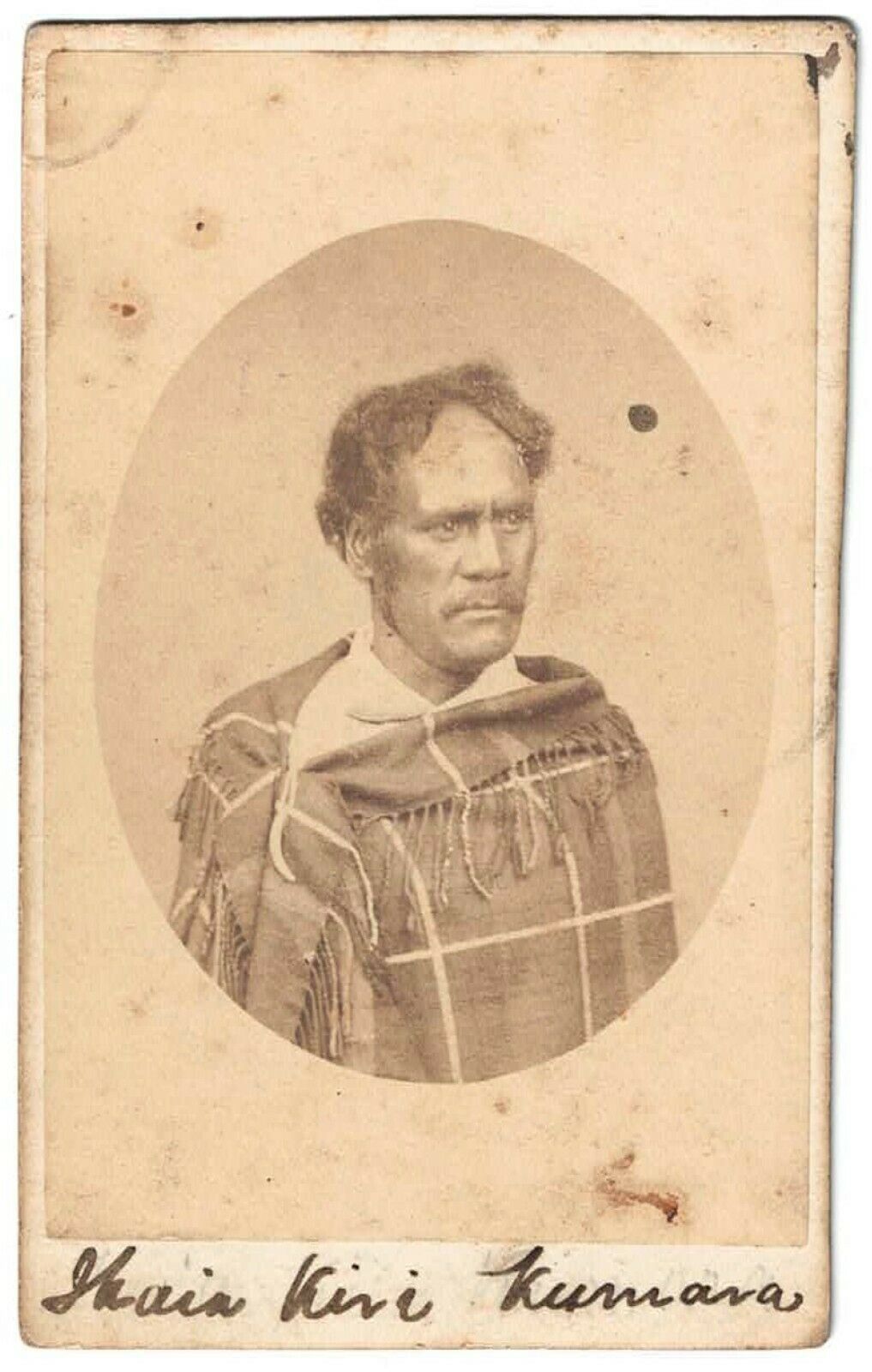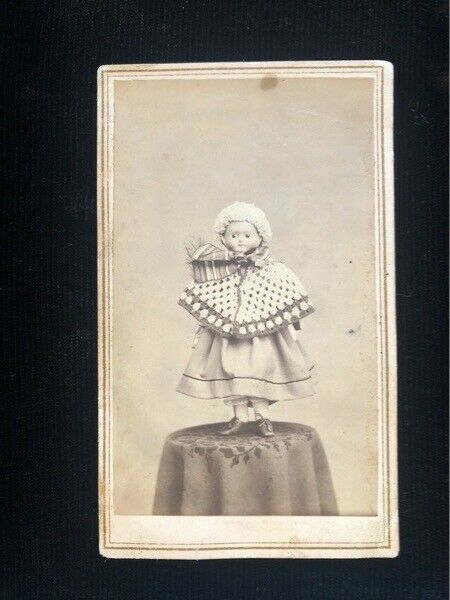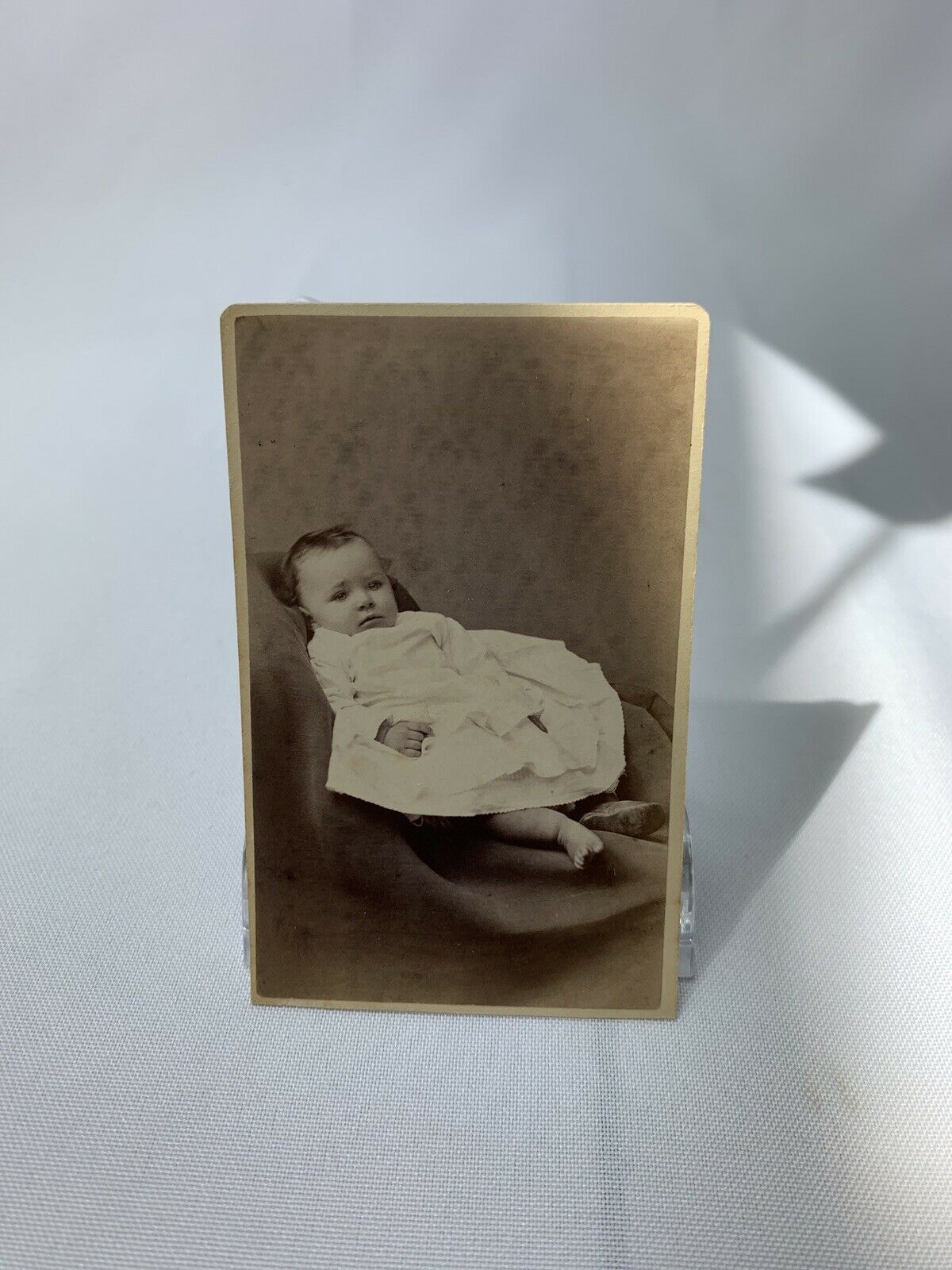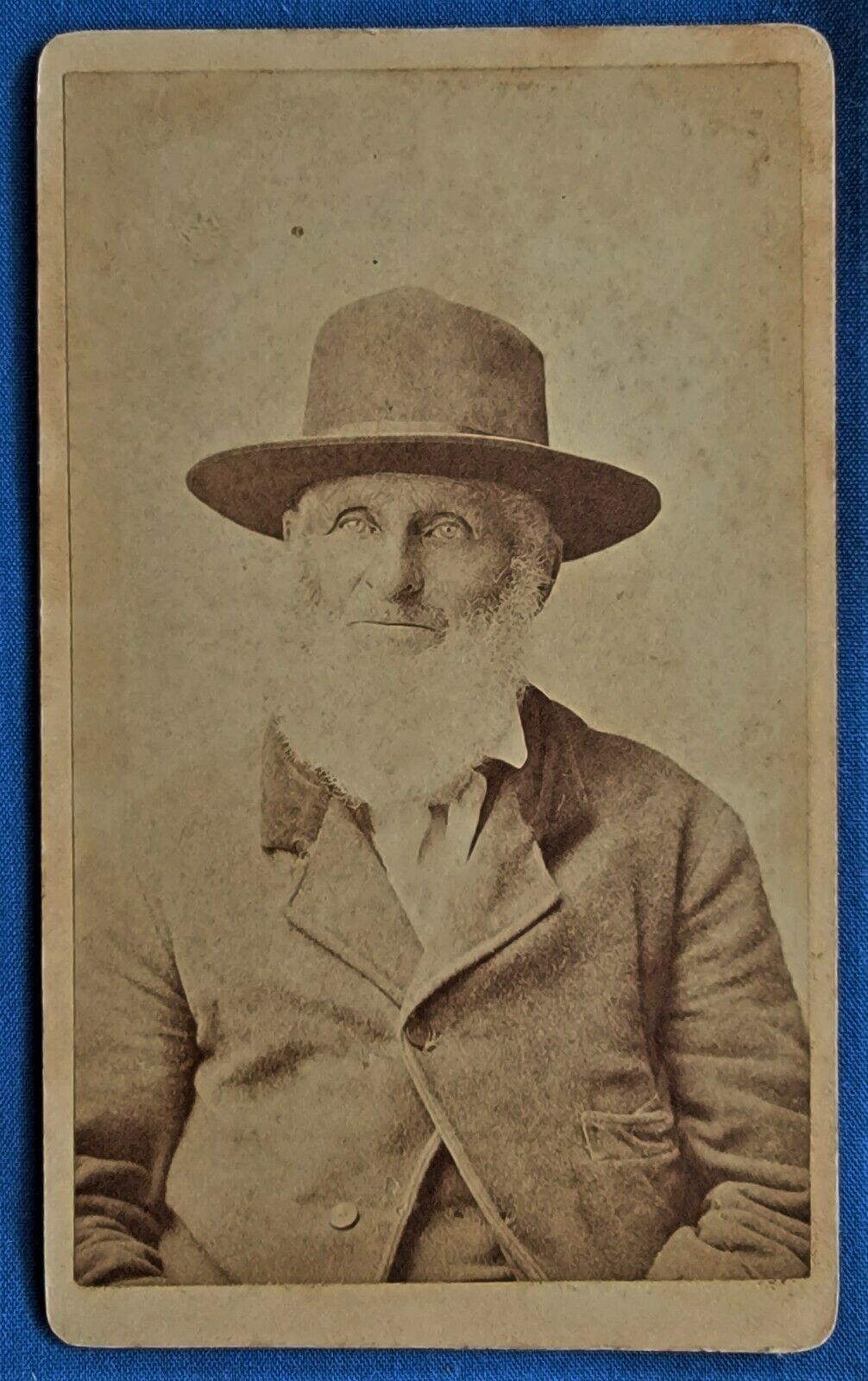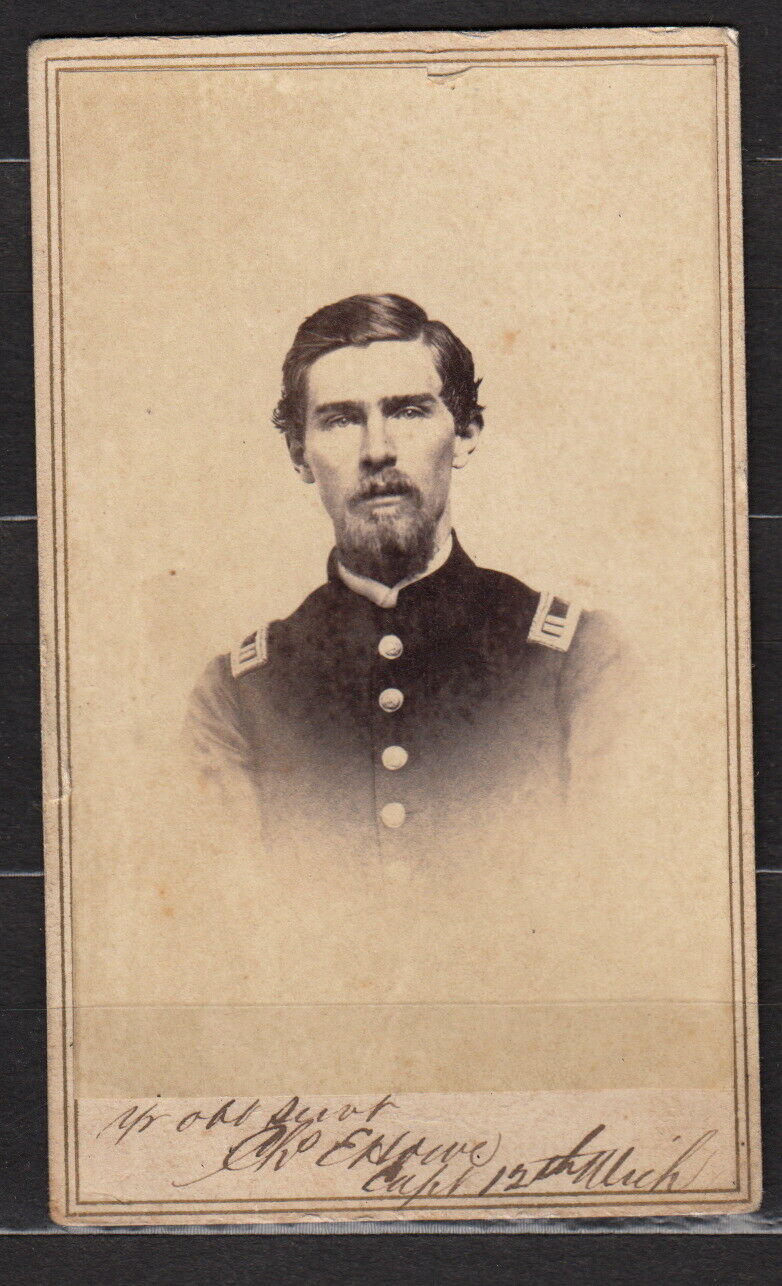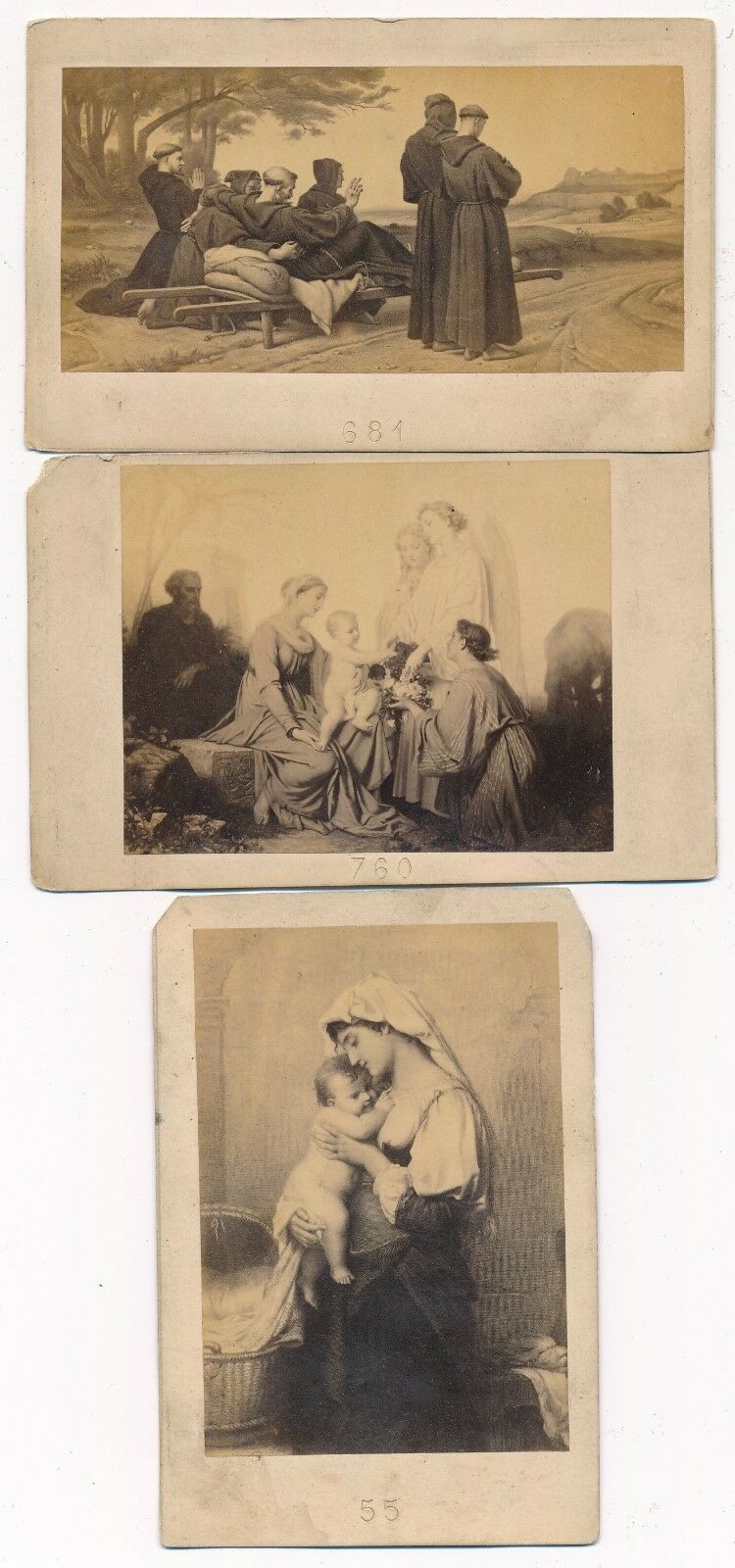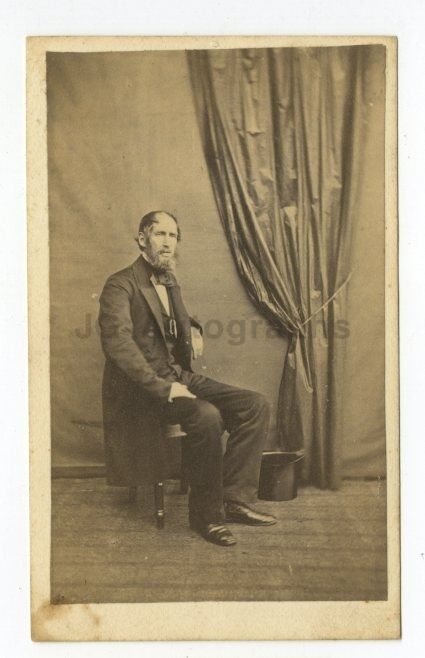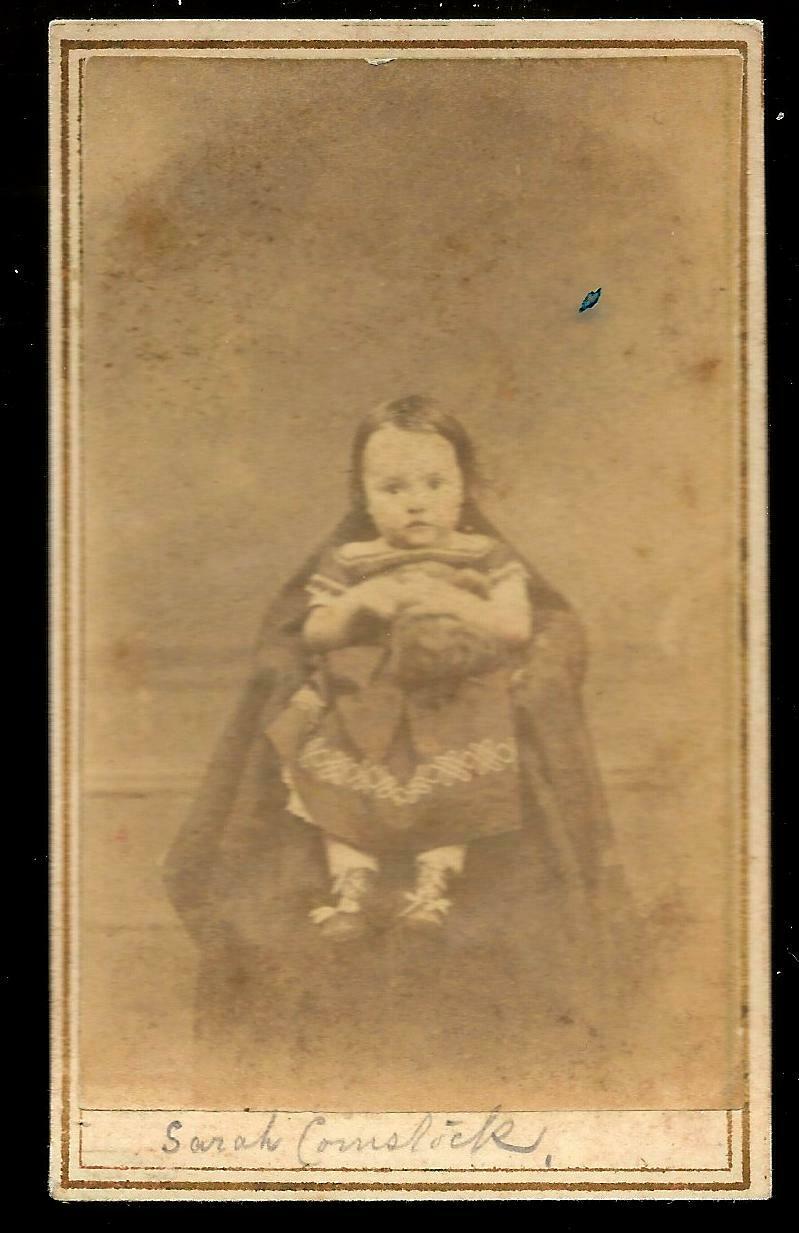-40%
MAORI CHIEF IHAIA TE KIRIKUMARA, ORIGINAL 1870 CDV PHOTO TARANAKI NEW ZEALAND
$ 52.27
- Description
- Size Guide
Description
ORIGINAL CIRCA 1870 CARTE DE VISITE FORMAT ALBUMEN PRINT PHOTOGRAPH by an unidentified Taranaki region photographer, North Island of NEW ZEALAND.A STUDIO PORTRAIT OF MAORI CHIEF, IHAIA TE KIRIKUMARA (died 1873) The photograph has identifying captions on the front and back of the mount.
It was probably taken around 1870. The photographer is unidentified, but there is a small portion of an embossed stamp (illegible) at top right corner.
THE ALBUMEN PRINT HAS A SMALL NK SPOT, AND BOTH THE PHOTO AND MOUNT HAVE LIGHT FOXING.
DIMENSIONS: Standard carte de visite size, 103 x 63 mm (APPROX. 4 x 2.5 INCHES)
From
Te Ara, Encyclopedia of New Zealand:
Īhāia Te Kirikūmara was a chief of the Ōtaraua hapū of
Te Āti Awa
. He was born in Taranaki; his father was Piriraukura. During his early life Te Kirikūmara took part in many of the intertribal wars involving his people. Ōtaraua fought against a northern war expedition in November 1821 or early 1822, when the Taranaki tribes helped
Te Rauparaha
to defeat the Waikato tribes at Motunui. Retaliation came in 1831 when the Waikato tribes invaded Taranaki and captured Pukerangiora pā, on the Waitara River. Te Kirikūmara escaped from Pukerangiora. He took part in a revenge attack against the Ngāti Maniapoto pā of Motutaua at Mōkau in March 1832. Waikato again invaded Taranaki and Te Kirikūmara was among those who were besieged at Mikotahi, an island pā near present day New Plymouth, in 1833. Under the terms of the truce Te Kirikūmara and other Te Āti Awa went to Waikato as captives. There he was probably baptised, and took the name Īhāia (Isaiah).
After 1840, when some of the Waikato and Ngāti Maniapoto leaders came under the influence of Christianity, Īhāia was allowed to return home.
Te Awa-i-taia
, of Waikato, states that Īhāia went to Kapiti and thence to Waikanae with a delegation which invited
Wiremu Kīngi Te Rangitāke
to return to Waitara, where Īhāia himself was to live. In 1844 Īhāia first offered to sell land at Waitara to the government, but because his claim was disputed by Te Rangitāke, the offer was not accepted. He renewed the offer in 1847 and in 1850 (on the latter occasion to Governor
George Grey
in person) but it was again declined.
In 1854 an event took place which was to influence, both directly and indirectly, the course of Īhāia's life. Taranaki tribes met at Manawapou, in Ngāti Ruanui territory, in May and pledged themselves to retain all land between Ōkurukuru and Kai Iwi. This agreement was referred to by Pākehā as a 'land league'. About the same time as the Manawapou meeting, Rāwiri Waiaua, the leader of the Puketapu section of Te Āti Awa, sold the Hua block and then offered for sale land previously excluded from it which had been claimed by Te Waitere Kātātore. The land was accepted by the land purchase commissioner. Rāwiri and his men went to cut the boundaries of the block although they had been warned not to by Kātātore. In a confrontation on 3 August 1854 Rāwiri and five of his followers were killed. Taranaki settlers jumped to the conclusion that Kātātore was carrying out the policy of the so-called land league.
Some months after this Īhāia had a Ngāti Ruanui man named Rīmene killed for committing adultery with his wife, Hariata. A Ngāti Ruanui war party of 300 warriors subsequently attacked Īhāia's pā at Manaku in December and stormed it. Īhāia and his people were only able to escape because their retreat was covered by the followers of Rāwiri. In May the following year Rāwiri's people, who had rallied under the leadership of Arama Karaka, a relative of Rāwiri, were besieged at Ninia pā by Kātātore and Te Rangitāke with their Te Āti Awa followers and Ngāti Ruanui allies. As it was a desperate situation, Arama Karaka sought aid from Īhāia. Īhāia agreed on condition that he was given land at Ikamoana, near New Plymouth. His terms were accepted and he built a pā there. Ngāti Ruanui later attacked the pā but were driven off and returned to their homes. Fighting among Te Āti Awa continued until late 1856; peace was made early in 1857. By the terms of the peace Kātātore gave up the land on which Rāwiri was killed and he and Te Rangitāke were no longer to prevent the sale of land to which they did not have a personal claim.
The peace lasted until early January 1858 when Kātātore was ambushed and killed by Īhāia's brother Tāmati Tīraurau and five other men. Īhāia admitted to
Robert Parris
, the district land purchase commissioner, that he had planned the murder. He may have lured Kātātore to New Plymouth with offers of friendship. After the murder, fighting between Māori war parties took place on the farms of the New Plymouth settlers.
Īhāia left his pā at Ikamoana and returned to Ōtaraua territory in Waitara, which became the scene of further conflict. He built a pā, Te Karaka, on the Waitara River and was besieged there in March 1858 by his Te Āti Awa enemies. After some weeks his followers were starving. The government offered a peace settlement whereby Īhāia would be deported to live with his relatives in the Chatham Islands. He rejected this and requested aid from allies in Wanganui and Waikato. Robert Parris and the Reverend
John Whiteley
acted as intermediaries and arranged a settlement with Te Rangitāke by which the pā would be abandoned and then burnt by Te Rangitāke's followers. Before this was carried out an upper Wanganui chief named Wiremu Te Korowhiti arrived with reinforcements. Īhāia evacuated the pā but left armed men in trenches lying in wait for Te Rangitāke. Parris discovered this in time to warn Te Rangitāke and the ambush failed. Īhāia and his followers left the Waitara district and, moving north, settled near the Mimi River, where they built a strong pa.
Īhāia continued to oppose Te Rangitāke for reasons of his own. Demonstrating political astuteness, he wrote letters to newspapers with the intention of rousing settler opposition to Te Rangitāke. He supported Te Teira's sale of Waitara land to the government and when war began in March 1860 he assisted the government. On 27 June 1860 he guided British troops into position before the attack on Puketākauere pā. Although the British were severely defeated, Īhāia was praised for his part in the operation. In 1869 he helped raise Māori troops to fight
Tītokowaru
and advised the government on Māori matters.
Īhāia Te Kirikūmara is said to have died on 9 July 1873, at Wakatere pā on the Waitara River, from consumption. He was interred at the burial ground of his people at Te Karaka.
AIRMAIL WITH TRACKING FROM AUSTRALIA TO EUROPE, USA or NEW ZEALAND is 18 USD (IF YOU ARE IN AUSTRALIA, PLEASE WAIT BEFORE PAYING BECAUSE THE POSTAGE WILL OBVIOUSLY BE LESS)
